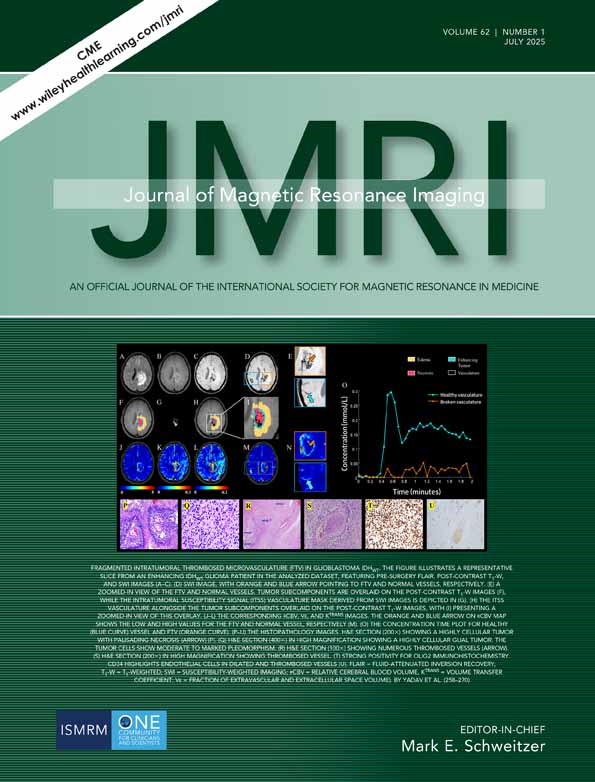Identifying Primary Sites of Spinal Metastases: Expert-Derived Features vs. ResNet50 Model Using Nonenhanced MRI
K.L. and J.N. contributed equally to this work.
Abstract
Background
The spinal column is a frequent site for metastases, affecting over 30% of solid tumor patients. Identifying the primary tumor is essential for guiding clinical decisions but often requires resource-intensive diagnostics.
Purpose
To develop and validate artificial intelligence (AI) models using noncontrast MRI to identify primary sites of spinal metastases, aiming to enhance diagnostic efficiency.
Study Type
Retrospective.
Population
A total of 514 patients with pathologically confirmed spinal metastases (mean age, 59.3 ± 11.2 years; 294 males) were included, split into a development set (360) and a test set (154).
Field Strength/Sequence
Noncontrast sagittal MRI sequences (T1-weighted, T2-weighted, and fat-suppressed T2) were acquired using 1.5 T and 3 T scanners.
Assessment
Two models were evaluated for identifying primary sites of spinal metastases: the expert-derived features (EDF) model using radiologist-identified imaging features and a ResNet50-based deep learning (DL) model trained on noncontrast MRI. Performance was assessed using accuracy, precision, recall, F1 score, and the area under the receiver operating characteristic curve (ROC-AUC) for top-1, top-2, and top-3 indicators.
Statistical Tests
Statistical analyses included Shapiro–Wilk, t tests, Mann–Whitney U test, and chi-squared tests. ROC-AUCs were compared via DeLong tests, with 95% confidence intervals from 1000 bootstrap replications and significance at P < 0.05.
Results
The EDF model outperformed the DL model in top-3 accuracy (0.88 vs. 0.69) and AUC (0.80 vs. 0.71). Subgroup analysis showed superior EDF performance for common sites like lung and kidney (e.g., kidney F1: 0.94 vs. 0.76), while the DL model had higher recall for rare sites like thyroid (0.80 vs. 0.20). SHapley Additive exPlanations (SHAP) analysis identified sex (SHAP: −0.57 to 0.68), age (−0.48 to 0.98), T1WI signal intensity (−0.29 to 0.72), and pathological fractures (−0.76 to 0.25) as key features.
Data Conclusion
AI techniques using noncontrast MRI improve diagnostic efficiency for spinal metastases. The EDF model outperformed the DL model, showing greater clinical potential.
Plain Language Summary
Spinal metastases, or cancer spreading to the spine, are common in patients with advanced cancer, often requiring extensive tests to determine the original tumor site. Our study explored whether artificial intelligence could make this process faster and more accurate using noncontrast MRI scans. We tested two methods: one based on radiologists' expertise in identifying imaging features and another using a deep learning model trained to analyze MRI images. The expert-based method was more reliable, correctly identifying the tumor site in 88% of cases when considering the top three likely diagnoses. This approach may help doctors reduce diagnostic time and improve patient care.
Level of Evidence
3
Technical Efficacy
Stage 2




